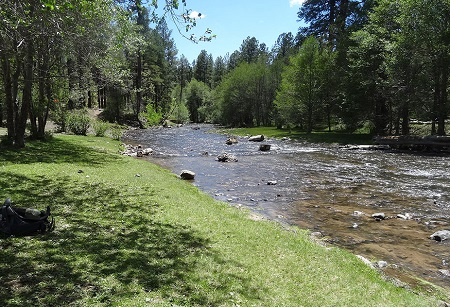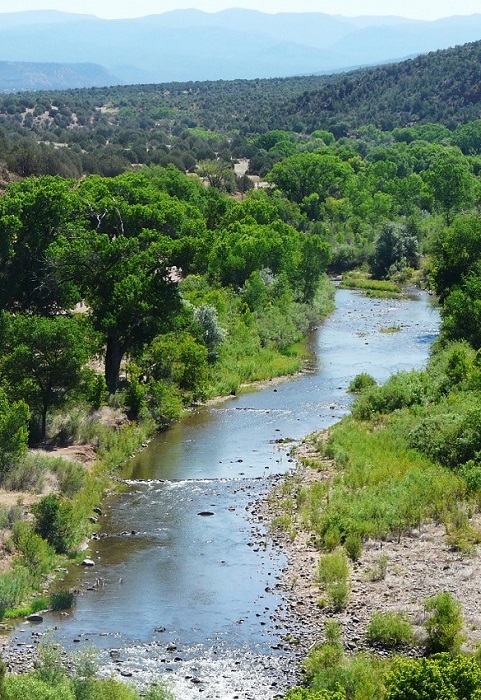|
The White Mountain Apache Tribe (WMAT) of the Fort Apache Indian Reservation in east-central Arizona has been working to develop a
reliable and high quality domestic and commercial water supply system for several decades, having previously depended on limited and
sometimes poor quality ground water sources. Since the early 2000s, the Whiteriver area has experienced water outages, declining water quality and a diminishing water source. The WMAT needs a dependable and sustainable water supply for residents and businesses on the Fort Apache Indian Reservation.
Reclamation prepared a public Draft Environmental Impact Statement (EIS), with assistance from WMAT, the Bureau of Indian
Affairs (BIA), and the U.S. Army Corps of Engineers (USACE) as cooperating agencies in accordance with the National Environmental Policy Act of 1969 (NEPA), Council
on Environmental Quality (CEQ) regulations (40 Code of Federal Regulations [CFR] 1500–1508), and U.S. Department of the Interior NEPA
regulations (43 CFR 46). The EIS process discloses the potential environmental impacts associated with constructing and operating the
proposed WMAT Rural Water System to divert, store, and distribute water from the North Fork of the White River for the use and benefit
of the WMAT. The EIS also defines and examines alternatives to accomplish the purpose and need for the proposed action.
Background Information

North Fork of the White River
|
Since the creation of the White Mountain Apache Indian Reservation in 1871, water has been central to the survival and development of the WMAT. The Reservation is situated on the major headwaters of the Salt River and produces over half the streamflow entering Roosevelt Lake, which supplies water to the Salt River Project and subsequently to the Salt River Valley irrigation projects and Phoenix Metropolitan area cities and towns.
|
|
The competition over a common stream system led to a century of water right disagreements and conflicts between WMAT and water users in the Salt River Valley.
WMAT claimed its vested and paramount Indian reserved water rights to use water that underlies, borders, and traverses the Fort Apache Indian Reservation, and asserted that those rights had never been extinguished. The downstream parties claimed their water rights pursuant to the State-based doctrine of appropriation. Adjudication proceedings in Maricopa County Superior Court for the Gila River watershed and in the Apache County Superior Court for the Little Colorado River watershed brought WMAT and downstream parties into litigation that was best resolved by an honorable and dignified
settlement that WMAT, the Salt River Project, and other irrigation, municipal and private parties agreed to reach.
|
At the request of the WMAT, a Federal Negotiation Team was appointed for the Tribe in 2004 by the U.S. Secretary of Interior. Five years later, on January 13, 2009, the WMAT Water Rights Quantification Agreement (“Quantification Agreement”) was formally approved by the Tribal Council and by other settling parties in the Salt River Valley and towns along the Tribe’s northern boundary soon thereafter. The provisions of the Quantification Agreement provided for the long-term water needs of the Reservation.
The Quantification Agreement was confirmed by the U.S. Congress in the Claims Resolution Act of 2010[3] (Public Law 111-291, Title III, 124 Statute 3064, 3073 [2010]). The cornerstone of this Act is construction by Reclamation of a drinking water system anchored by a dam and reservoir on the North Fork of the White River, a treatment plant, and a pipeline to serve Reservation communities. Section 304(c) of the Act designated Reclamation as the lead Federal agency to ensure compliance with applicable environmental laws and regulations associated with implementation of the WMAT Rural Water System. A Judgment and Decree approving the Quantification
Agreement was adopted by the Maricopa and Apache County Superior Courts to settle the WMAT water rights in the Gila River and Little Colorado River adjudications, respectively.
Proposed Project
|
The purpose of the proposed action is to provide a secure, safe and dependable, good‐quality, fresh water supply for its communities and tribal
members and ensure a long‐term and reliable water supply for the Tribe for present and future generations.
The proposed project would include
construction and operation of the WMAT Rural Water System, including a dam, storage reservoir, pumping plant, treatment facilities, and a distribution
system that would provide water to communities located on the Fort Apache Indian Reservation, including Whiteriver, Fort Apache, Canyon Day, Cedar
Creek, Carrizo, and Cibecue.
The proposed Miner Flat Reservoir would hold approximately 8,600 acre‐feet of water and the dam would be about 160 feet
high and 400 feet in length. Water from the Miner Flat Reservoir would be released to the North Fork of White River, diverted from the stream channel
upstream of the community of Whiteriver, and subsequently treated and conveyed via pipeline to downstream Fort Apache Indian Reservation communities.
|

Riparian Forest
|
|
Construction of the distribution system would include 50 miles of new water transmission pipeline. While the primary objective of the reservoir
would be to provide a more reliable and sustainable fresh‐water supply to WMAT residents and businesses, the project is anticipated to provide other
benefits, including more reliable commercial water supply, new recreation opportunities, limited flood control, and increased water for irrigation.
|
|